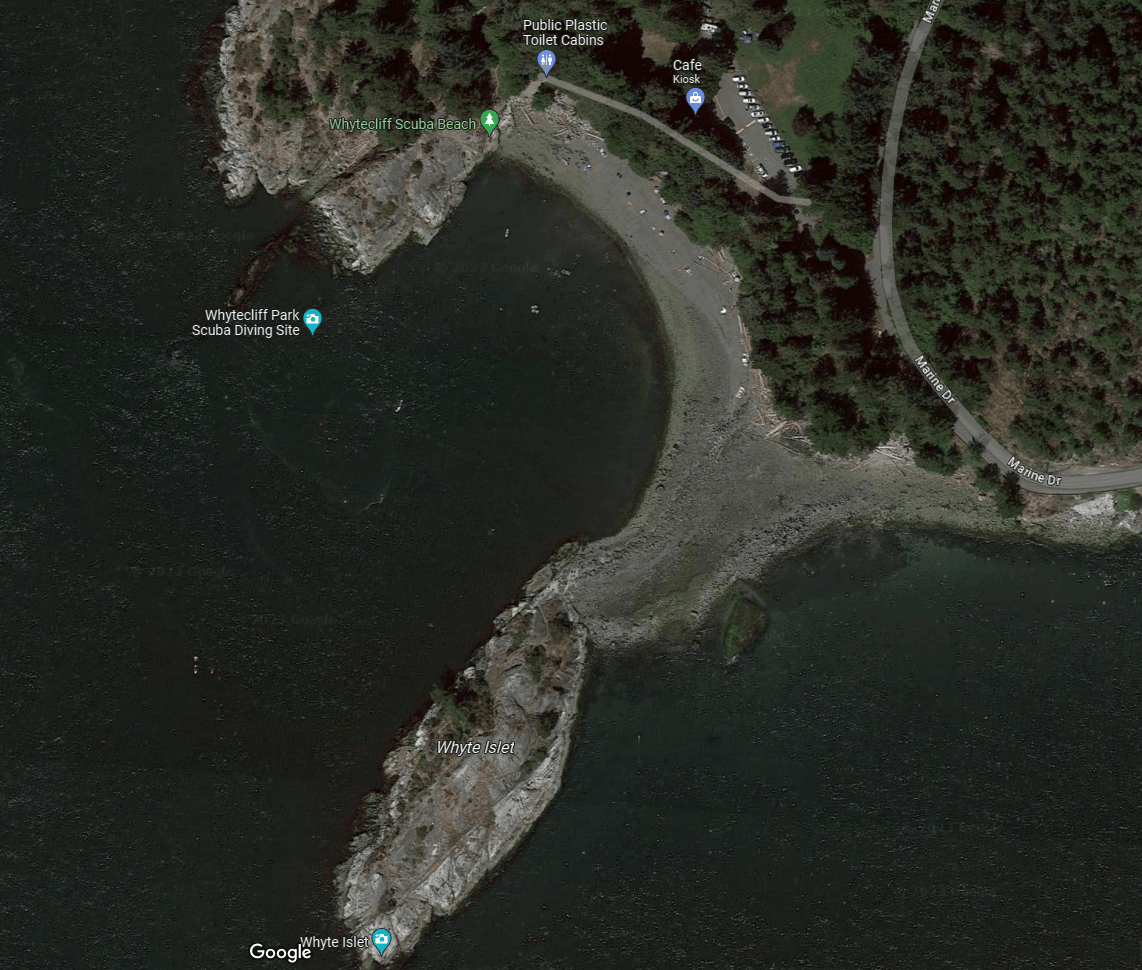 Whytecliff Park is a beautiful park and a popular shore dive site with local divers, beachgoers and paddleboarders. Vancouver dive shops often do training and fun dives in the park, as there is a lot to see for beginners and experts alike. You can do a couple of different dives here, a sandy bottom in the center of the bay and wall dives on the two sides.
Whytecliff Park is a beautiful park and a popular shore dive site with local divers, beachgoers and paddleboarders. Vancouver dive shops often do training and fun dives in the park, as there is a lot to see for beginners and experts alike. You can do a couple of different dives here, a sandy bottom in the center of the bay and wall dives on the two sides.
The park has plenty of parking, a small cafe and public washrooms, open year round. There are a couple short walking trails with beautiful views of the ocean, a rocky beach with a small sandy patch and during low tide, a small island to walk to and explore.
Whytecliff park gets very popular in the summer, especialy on week-ends. Arriving early in the morning to get a good parking spot and maybe even a table to set-up your gear is a good idea.
A short paved path from the parking lot leads down to cove. Most divers change and gear up at the parking lot and walk down to the beach ready to get in the water. From the cove you have a couple of options for your cold water shore dive.
Dive Sites
Whytecliff Bay
The center of the cove is a sandy bottom and good for beginners and those new to cold water diving and using a drysuit. Staying inside the cove, means that in most cases you will have more protection from surge and currents. A short 5 min surface swim out will get you to the dive site where you can drop to a shallow sandy bottom and start your dive. You will see a lot of crabs, starfish, flatfish, greenlings, sea cucumbers and other critters in the sand. Occasionally, seals come to check out divers and can be quite curious and playful. The depth increases gradually to about 30 meters.
Anemone Garden
The Northwest side of the bay (to your right when facing the ocean from the beach) has a wall and a bottom that gradually slopes down to over 40 m / 130’, beyond recreational limist. On the shallwer aroun around 50’ / 15m, you will find a several plateaus with beautiful anemone garden. You can spot rockfish, ling cod, greenlings, urchins, sea stars, crabs, sea cucumbers and nudis. This site can be prone to stonger currents during tide exchanges. Dropping further, divers can see large cloud sponges.
The Cut
The area further north is known as “The Cut” and is recommeded for experienced divers with good buoyancy control and familiar with the local tides. You are not protected by the cove and current can be very strong, especially during tide exchange. ‘The Cut’ can be accessed directly from shore, descending from a steep hill on a separate trail west of the beach. The entry point can be covered with drift wood and tricky to manage, when fully geared up. Alternatively, you can access “The Cut” from the bay, with a longer surface swim, past the Anemonne Garden. From “The Cut” you can head left, back into the bay, or right, following the outer wall. Both sides can go far deeper than recreational limits.
Whyte Islet
On the East side of the bay the Whyte islet features a wall, accessible with a short surface swim from the beach. A steeper wall leads down from the islet to about 40 m / 130’. There is good protection from currents and lots of critters hidings in the cracks.
Seals are commonly seen in the bay, and occasionally approach divers. In the summer months, we have spotted a dogfish in the shallow areas (10-12m), on our way back to the beach, as well as a rat fish close to the Anemonie gardens.
Here is a cool video for the Whytecliff Park dive siteby a Diving Locker, a great local dive shop and training center for the Whytecliff Park dive site:
